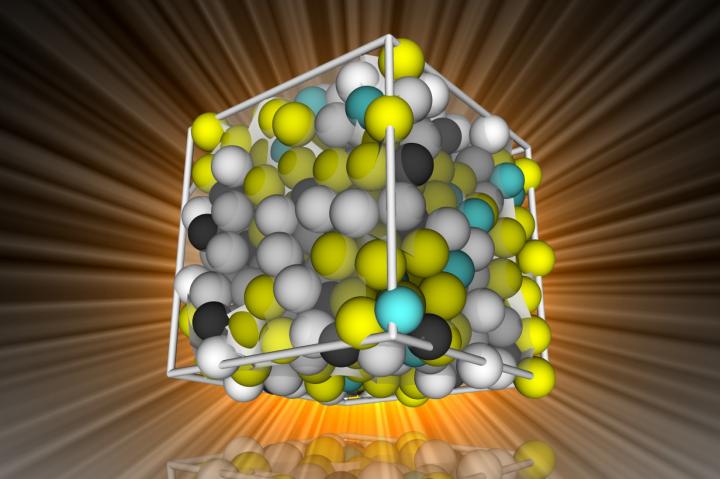The critical point in breaking the glass problem

This image shows an impression of the 'ideal glass'. Credit: University of Bristol
Until now, researchers' understanding has been splintered at best, with mutually incompatible interpretations of the physical processes underlying the emergence of amorphous solids (glasses).
Now a team of scientists from the University of Bristol and Johannes Gutenberg Universität Mainz in Germany may have found the missing fragment, enabling the reconciliation of differing interpretations.
Dr Paddy Royall from the University of Bristol's School of Physics, explained: “The challenge boils down to whether glass is a true solid in its own right – the so-called thermodynamic interpretation – or whether in essence glass is 'just' a very viscous liquid, albeit with a viscosity so large that pouring a 'glass' of glass would take around a million times the age of the universe – the so-called dynamic interpretation.”
In the thermodynamic interpretation, upon sufficient cooling, a very unusual material known as an 'ideal glass' would form.
Such an ideal glass, like a crystal, has only one way of organizing the constituent atoms – yet mysteriously, is amorphous and disordered.
The paradox of how there can be only one way of arranging the atoms in a disordered material remains, but measurements made by the Anglo-German collaboration indicate that their samples are very close to the ideal glass.
The Bristol team, led by Dr Royall and Dr Francesco Turci, worked with Professor Thomas Speck in Mainz to produce novel methods to produce samples exceptionally close to ideal glasses.
Dr Royall said: “In doing so, they found that the dynamical interpretation of the glass transition seems to end at a 'critical point', which is close to, or even coincides with, the temperature at which the ideal glass is formed.
“In other words, the dynamical and thermodynamic interpretations of the glass transition are different reflections of the same underlying phenomenon.”
###
Paper:
'Nonequilibrium Phase Transition in an Atomistic Glassformer: The Connection to Thermodynamics' by Francesco Turci, C. Patrick Royall, and Thomas Speck in Physical Review X.
Media Contact
All latest news from the category: Physics and Astronomy
This area deals with the fundamental laws and building blocks of nature and how they interact, the properties and the behavior of matter, and research into space and time and their structures.
innovations-report provides in-depth reports and articles on subjects such as astrophysics, laser technologies, nuclear, quantum, particle and solid-state physics, nanotechnologies, planetary research and findings (Mars, Venus) and developments related to the Hubble Telescope.
Newest articles

First-of-its-kind study uses remote sensing to monitor plastic debris in rivers and lakes
Remote sensing creates a cost-effective solution to monitoring plastic pollution. A first-of-its-kind study from researchers at the University of Minnesota Twin Cities shows how remote sensing can help monitor and…

Laser-based artificial neuron mimics nerve cell functions at lightning speed
With a processing speed a billion times faster than nature, chip-based laser neuron could help advance AI tasks such as pattern recognition and sequence prediction. Researchers have developed a laser-based…

Optimising the processing of plastic waste
Just one look in the yellow bin reveals a colourful jumble of different types of plastic. However, the purer and more uniform plastic waste is, the easier it is to…


